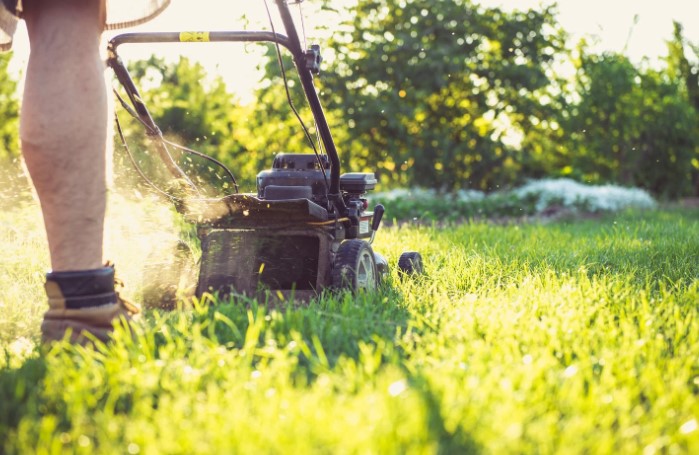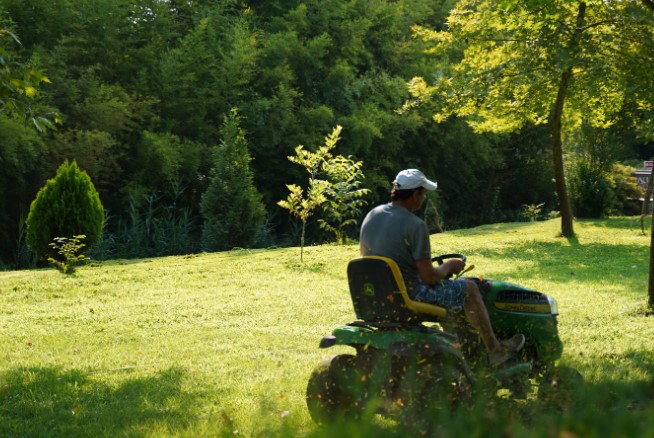- Why Is There No Grass Left After Scarifying?
- How to Fix a Lawn with No Grass After Scarifying?
- How Long Does It Take for Grass to Come Back After Scarifying?
- How NOT to Scarify Your Lawn?- Common Mistakes to Avoid
- Preventing Lawn Damage from Scarifying in the Future
- Conclusion & Final Suggestion
- Related Questions People Also Ask on No Grass Left After Scarifying
Scarifying is an essential part of lawn care, helping to remove thatch and moss buildup. However, if done incorrectly or under the wrong conditions, it can leave your lawn looking bare and damaged.
If you’re wondering why there is no grass left after scarifying and how to fix it, this guide will walk you through the causes, recovery methods, and future prevention tips.
Why Is There No Grass Left After Scarifying?
If your lawn looks patchy, thin, or completely bare after scarifying, several factors could be responsible:
1. Excessive Thatch Removal
Scarifying too aggressively can strip away the upper layer of healthy grass along with the thatch. While removing thatch is beneficial, going too deep may leave the soil exposed and hinder regrowth.
2. Weak or Unhealthy Grass
If the lawn was already struggling due to poor maintenance, pests, or diseases, scarifying can worsen the damage. Weak grass struggles to recover, leading to bare patches instead of healthy regrowth.
3. Poor Soil Conditions
Compacted or nutrient-deficient soil can make it difficult for new grass to grow. If the soil is too hard or lacks organic matter, even reseeding might not be enough for proper regrowth.
4. Wrong Season for Scarifying
Scarifying in the wrong season can shock the grass and slow down recovery.
Ideally, it should be done in spring (March-April) or autumn (September-October) when temperatures are mild and conditions are optimal for growth. Hence should be conscious on when and how to scarify lawn.
5. Drought or Improper Watering
After scarifying, the lawn needs consistent moisture to encourage regrowth. If the lawn dries out or lacks adequate watering, new grass struggles to establish, leaving the lawn patchy.

How to Fix a Lawn with No Grass After Scarifying?
If scarifying has left your lawn looking worse than expected, follow these steps to restore it:
Assess the Lawn Condition
- Check if any healthy grass remains—if there are still patches, recovery will be easier.
- If the lawn is completely bare, you may need to reseed or lay new turf.
Improve Soil Quality
- Aerate the soil to improve drainage and allow roots to breathe.
- Top dress with a thin layer of compost or nutrient-rich soil to improve structure.
- Fertilise with a high-phosphorus fertiliser to encourage root development.
Overseeding the Lawn
- Choose high-quality grass seed suited for UK lawns (such as ryegrass or fescue blends).
- Evenly spread the seed and lightly rake it in to ensure good soil contact.
- The best time to overseed is in spring or autumn for optimal germination.
Watering and Aftercare
- Water daily for the first 10-14 days until the seeds establish.
- Gradually reduce watering but keep the soil moist during the initial growth phase.
- Protect the area from foot traffic, birds, and pets to allow new grass to grow.
How Long Does It Take for Grass to Come Back After Scarifying?
Lawn recovery time depends on several factors, but here’s a general timeline:
| Timeframe | Lawn Recovery Progress |
| Day 1-7 | Seeds absorb moisture, soil settles, initial root development starts. |
| Week 1-2 | First signs of grass shoots appear. |
| Week 3-4 | Grass starts to fill in, patches begin to blend. |
| Week 5-6 | Lawn regains full coverage with consistent care. |
Factors like weather, soil condition, and seed type can influence this timeline, so patience and proper aftercare are essential.

How NOT to Scarify Your Lawn?- Common Mistakes to Avoid
To prevent unnecessary damage, avoid these common scarifying mistakes:
Scarifying Too Deep
- Going too aggressive with scarifying can strip away healthy grass along with the thatch.
- Always adjust the depth settings to remove thatch without damaging the grass roots.
Scarifying at the Wrong Time
- Avoid scarifying in summer (too hot and dry) or winter (too cold and slow growth).
- The best seasons to scarify are spring and early autumn, when grass is actively growing.
Not Preparing the Lawn First
- Always mow the lawn to a short height before scarifying.
- Ensure the lawn is moist but not waterlogged before starting.
Skipping Aftercare
- Without fertiliser, overseeding, or watering, the lawn struggles to recover.
- Proper aftercare speeds up regrowth and prevents long-term damage.
Scarifying Too Often
- Scarifying once or twice a year is enough—overdoing it can weaken the grass.
- Monitor thatch buildup and only scarify when necessary.

Preventing Lawn Damage from Scarifying in the Future
To ensure scarifying benefits your lawn instead of harming it, follow these tips:
- Scarify at the right time – Spring (March-April) or Autumn (September-October).
- Use the right tools – A manual rake for light scarifying, an electric/petrol scarifier for deeper work.
- Prepare the lawn properly – Mow first, remove debris, and slightly moisten the soil.
- Fertilise after scarifying – Use a balanced fertiliser to support regrowth.
- Overseed and water – Fill in bare patches with new grass seed and keep the soil moist.
Conclusion & Final Suggestion
Scarifying is essential for lawn health, but if not done correctly, it can leave your lawn looking bare and lifeless. The key to recovery is proper aftercare—ensuring the soil is healthy, overseeding where needed, and maintaining consistent watering.
Final suggestion: If your lawn is severely damaged, consider aerating and top-dressing before reseeding for the best results. With patience and the right steps, your lawn will come back greener and healthier in just a few weeks.
Related Questions People Also Ask on No Grass Left After Scarifying
1. Should I fertilise my lawn after scarifying?
Yes, using a high-phosphorus or balanced fertiliser after scarifying helps promote root development and grass regrowth.
2. What is the best seed for repairing a UK lawn?
Ryegrass and fescue blends are ideal for UK weather, providing durability and fast growth.
3. Can I walk on my lawn after scarifying?
Avoid heavy foot traffic for at least 2 weeks to allow seeds to establish properly.
4. How do I know if my lawn needs scarifying?
If your lawn feels spongy underfoot or has excess thatch buildup (more than 1cm thick), it’s time to scarify.
5. What’s the difference between scarifying and aerating?
- Scarifying removes thatch and moss to prevent suffocation.
- Aerating loosens compacted soil for improved drainage and root growth.


0 Comments